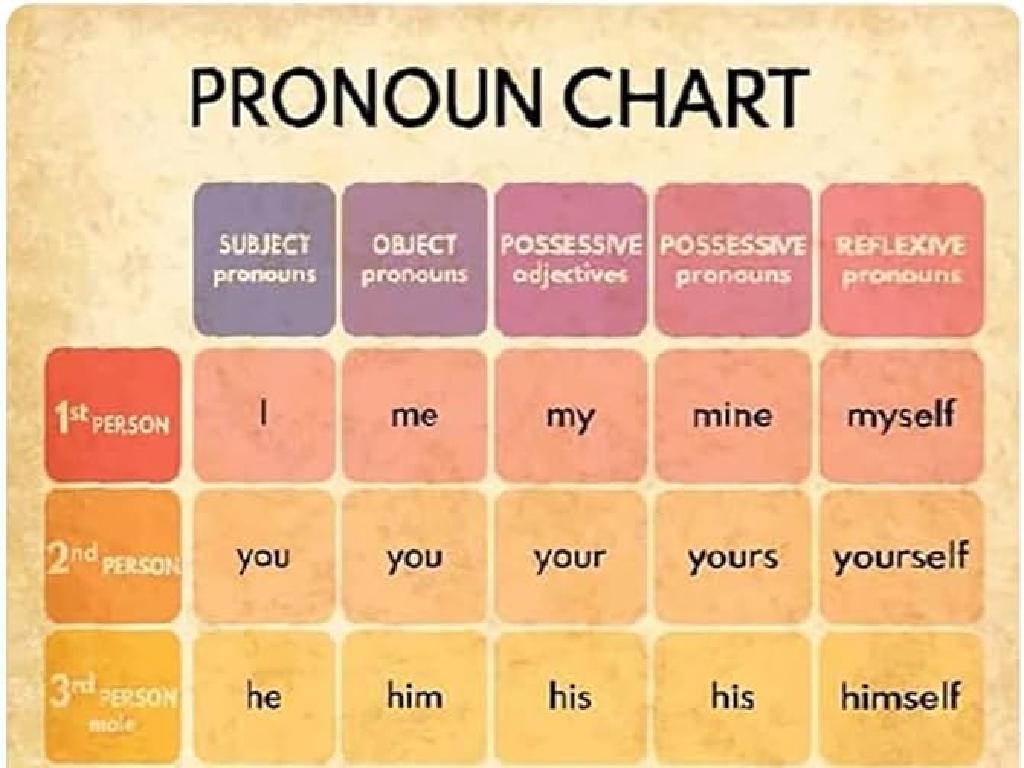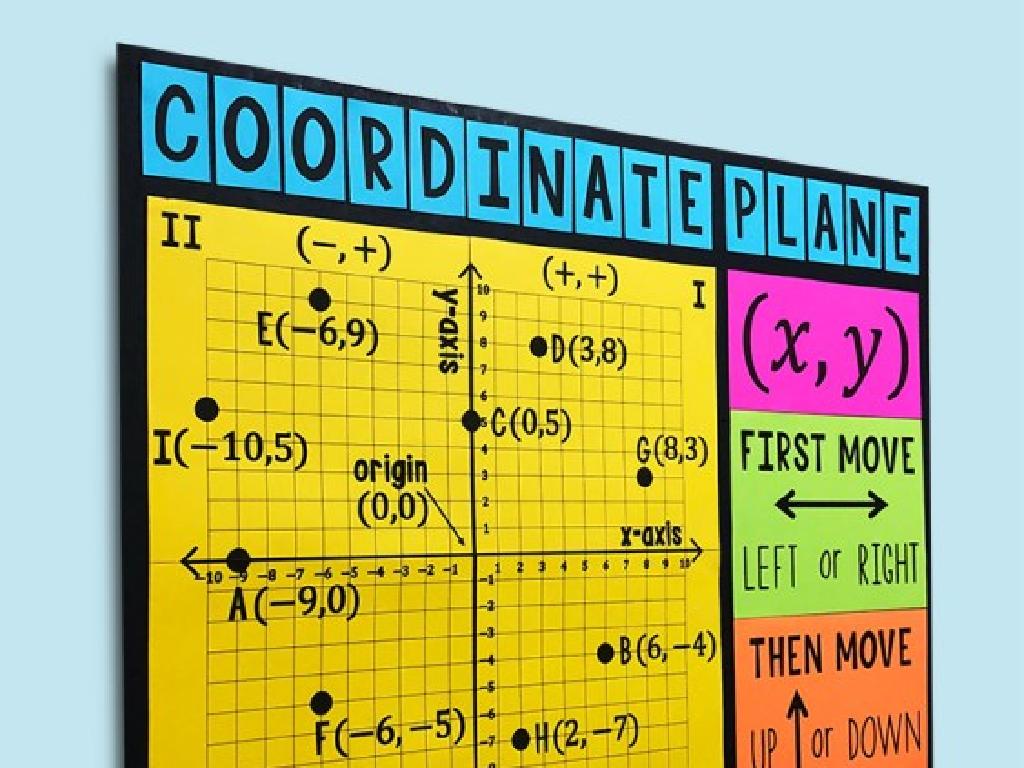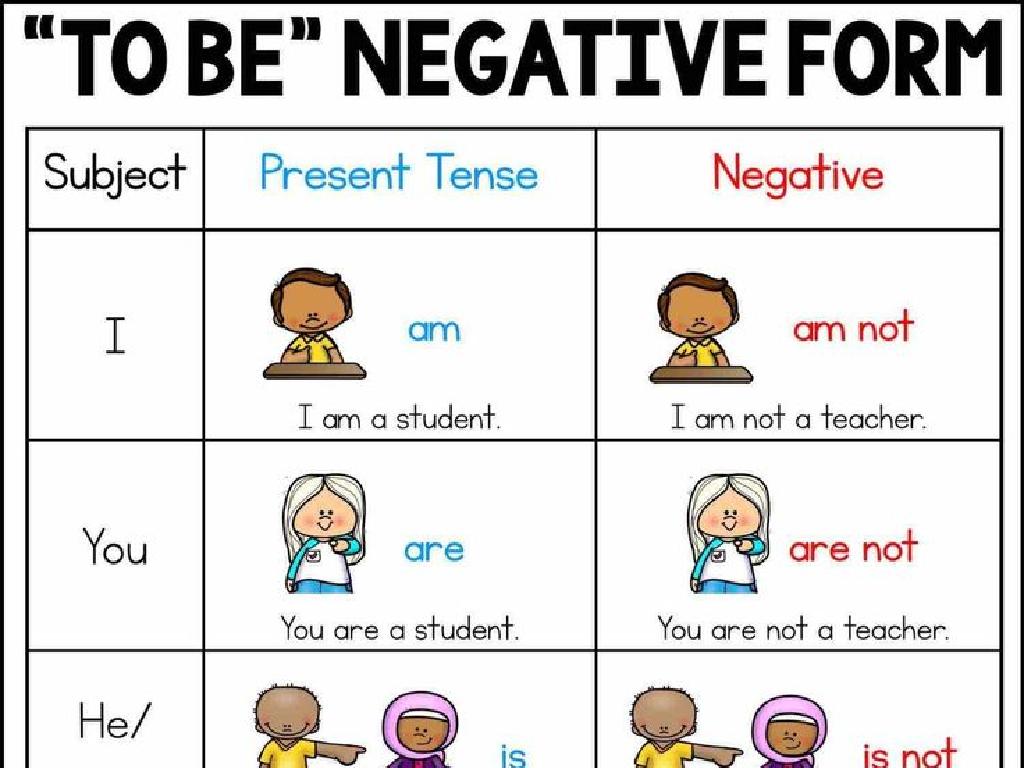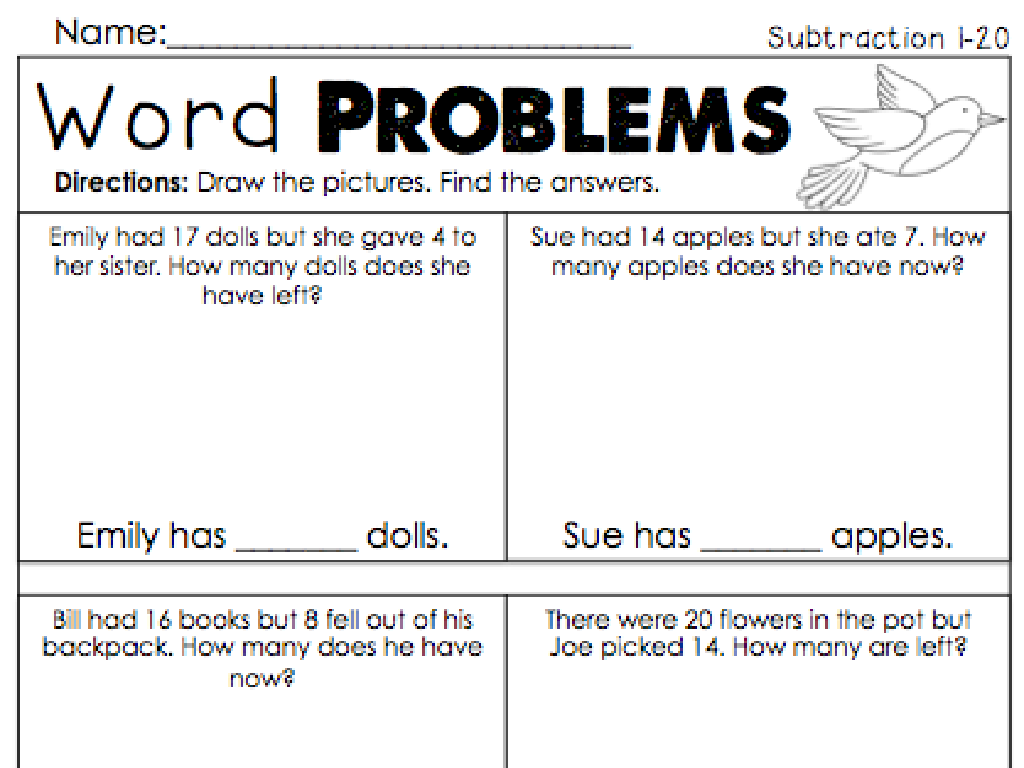Divide Larger Numbers By 1-Digit Numbers: Interpret Remainders
Subject: Math
Grade: Fourth grade
Topic: Division Word Problems
Please LOG IN to download the presentation. Access is available to registered users only.
View More Content
Welcome to Division: Larger Numbers & Remainders
– Dive into dividing larger numbers
– Discover the role of remainders
– Remainders are what’s left over after division
– Real-life examples of remainders
– E.g., 13 cookies shared among 4 friends, 1 cookie remains
– Division as a valuable skill
– Helps in fair sharing, budgeting, and more
|
This slide introduces students to the concept of division with larger numbers and the importance of understanding remainders. Begin by explaining that division is a way of sharing things equally and that sometimes, things don’t divide evenly, which is where remainders come into play. Use relatable examples like sharing cookies or toys to illustrate the concept of remainders. Emphasize that division is not just a math skill but a practical skill that they will use in everyday life, such as dividing up snacks or planning time. Encourage students to think of division as a tool for solving problems and making fair decisions. The goal is to make them see the value and application of division beyond the classroom.
Understanding Division and Remainders
– Division: Sharing equally
– Division splits a number into equal parts
– Imagine dividing a pizza
– Key Terms: Dividend, Divisor, Quotient, Remainder
– Dividend is what you divide. Divisor is the number you divide by. Quotient is the result. Remainder is what’s left over
– Remainders in real life
– Sometimes you can’t divide things up evenly, and you have a little bit left – that’s a remainder
|
This slide introduces the concept of division to fourth graders by relating it to a familiar situation – dividing a pizza among friends. It’s important to explain that division is the process of distributing a number into equal parts. The terms ‘dividend’, ‘divisor’, ‘quotient’, and ‘remainder’ are defined, with emphasis on the remainder as a key concept when things can’t be divided up evenly. Use real-life examples to illustrate remainders, such as sharing candies among friends or splitting chores. Encourage students to think of division as a fair sharing method and to understand that sometimes, not everything can be divided perfectly, which is why we have remainders.
Dividing Step by Step: Long Division
– Break down a division problem
– Example: 52 ÷ 4
– How many times does 4 go into 52?
– Use long division method
– Divide, multiply, subtract, bring down
– Understand remainders
– Sometimes numbers don’t divide evenly
|
This slide introduces students to the concept of long division with a specific example: 52 divided by 4. Start by explaining the steps of long division: divide, multiply, subtract, and bring down the next digit. Work through the example problem on the board step by step, showing students how to divide 52 by 4. Highlight that 4 goes into 52 thirteen times without a remainder. Emphasize the process of checking their work by multiplying the quotient by the divisor to see if it equals the dividend. Discuss what a remainder is and how to interpret it in the context of a word problem. For instance, if 52 represented the total number of apples and they were being put into bags of 4, there would be no apples left over. Encourage students to practice with additional problems and to be ready to explain the process of long division and the concept of remainders.
Understanding Division: Interpreting Remainders
– Division may not be even
– Remainders: the numbers left over
– If 13 cookies are shared among 4 kids, 1 cookie remains.
– Remainders have meaning
– Remainders can indicate something incomplete, like 1 cookie not enough to share.
– Real-world remainder examples
– In real life, remainders could be leftover items or partial results in situations.
|
This slide introduces the concept of remainders in division to fourth-grade students. It’s important to emphasize that it’s perfectly normal for some division problems to not work out evenly, and that’s where remainders come into play. Use everyday examples to illustrate the concept of remainders, such as dividing cookies among a group of friends. Explain that the remainder is what’s left over after dividing as evenly as possible. Discuss how remainders can affect real-world situations, like how many full teams can be made from a group of students or how many whole items can be purchased with a certain amount of money. Encourage students to think about remainders in terms of things that cannot be divided further without breaking them into smaller parts.
Real-Life Division Problems
– Division in daily life
– Sharing cookies example
– If you have 13 cookies to share with 4 friends, how many does each get?
– Remainders in division
– Sometimes division doesn’t split evenly, leaving a remainder.
– Practical implications of remainders
– What to do with leftover cookies? Discuss options like sharing or saving.
|
This slide aims to show students how division is used in everyday life and the concept of remainders. Start by discussing how division is used for sharing items equally. Use the cookie example to make it relatable; if you have 13 cookies and 4 friends, including yourself, how do you divide them? Each person gets 3 cookies, and there’s 1 left over that’s the remainder. Discuss what the remainder represents and how it can affect the outcome in real-life situations. For instance, the leftover cookie could be shared further or saved for later. Encourage students to think of other examples where they have to divide items and deal with remainders.
Let’s Practice Division with Remainders!
– Practice: 81 ÷ 7
– Class works through the problem
– Discuss the remainder’s meaning
– What could the remainder represent?
– Real-world application of remainders
– E.g., 81 apples shared among 7 baskets, how many in each?
|
This slide is designed for an interactive class activity to practice dividing larger numbers by 1-digit numbers and interpreting remainders. Start by presenting the problem 81 divided by 7 on the board. Work through the division step by step with the class, encouraging students to participate in each stage. Once the division is complete, focus on the remainder and discuss what it could represent in real-world scenarios, such as dividing items or distributing tasks. This will help students understand that remainders must be considered and can have practical implications. For the activity, students can work on similar problems in small groups or pairs, each with a different division problem, and then share their solutions and interpretations of the remainders with the class.
Your Turn to Divide!
– Solve worksheet division problems
– Record all remainders
– Interpret each remainder’s meaning
– Does the remainder represent something left over, or a part of something?
– Share your solutions and thoughts
|
This slide is for an activity where students will apply their understanding of division with remainders. Provide worksheets with a variety of division problems that require students to divide larger numbers by 1-digit numbers. Remind them to carefully write down the remainders as part of their answers. Encourage them to think critically about what the remainder represents in the context of each problem; for example, if dividing objects among people, the remainder could indicate leftover items. After completing the worksheet, students should be prepared to discuss their solutions and the significance of the remainders in their problems. Possible activities include peer review, group discussions, or presenting their most interesting problem and solution to the class.
Class Activity: Remainder Relay!
– Form small groups for division fun
– Solve problems and discuss remainders
– Use long division to find remainders
– Each group explains their answers
– Share how you interpreted the remainder
– Ready, Set, Divide!
|
This interactive class activity is designed to help students work collaboratively to solve division problems and understand the concept of remainders. Divide the class into small groups and provide each with a set of division problems involving larger numbers divided by 1-digit numbers. Encourage students to use long division and discuss the remainders within their groups. After solving the problems, each group will explain to the class how they interpreted their remainders in the context of the problem. For example, if dividing objects among people, what does the remainder represent? This activity will help students grasp the practical implications of remainders in division. Possible activities: 1) Divide candies among friends, 2) Share books in a library, 3) Distribute supplies in class, 4) Allocate seats for a school play.
Conclusion & Reflection: Division with Remainders
– Summarize today’s division lesson
– We learned how to divide larger numbers by 1-digit numbers and interpret remainders.
– Division’s role in daily life
– Division helps us in situations like sharing equally among friends or budgeting.
– Reflect on an interesting point
– Share one aspect of division or remainders that intrigued you today.
– Discuss how to handle remainders
– Remainders tell us what’s left over after dividing equally, and they have practical uses.
|
As we wrap up today’s lesson, encourage students to reflect on what they’ve learned about division and remainders. Discuss how division is not just a mathematical concept but a tool we use in everyday life, such as when sharing items or planning events. Ask students to share one thing they found interesting about the lesson to foster engagement and assess their understanding. Emphasize the importance of interpreting remainders correctly, as they can affect the outcome in real-world scenarios. This reflection helps solidify their learning and shows them the practical application of the concepts they’ve learned.






